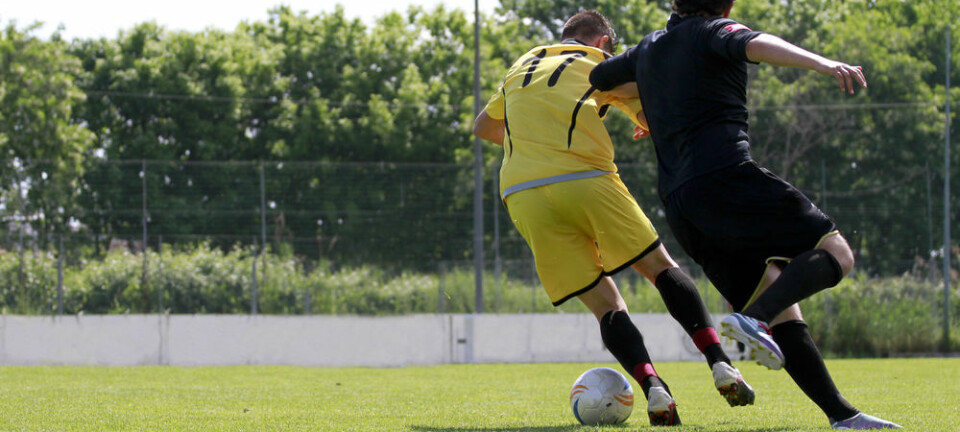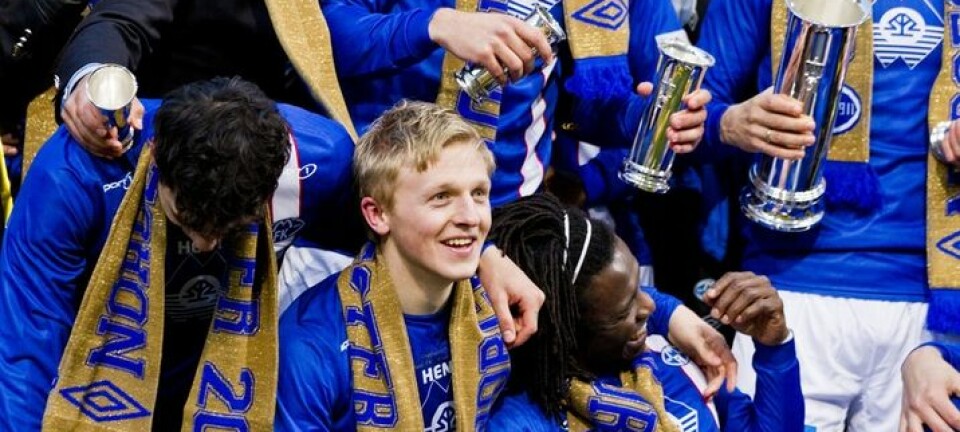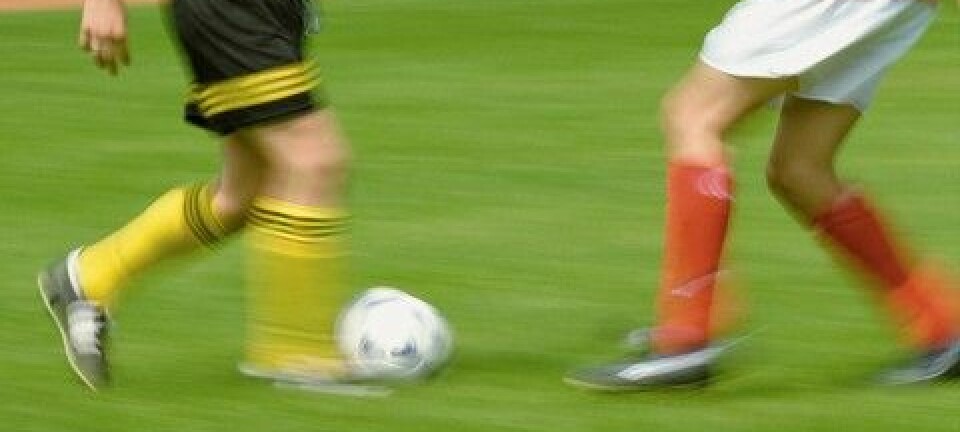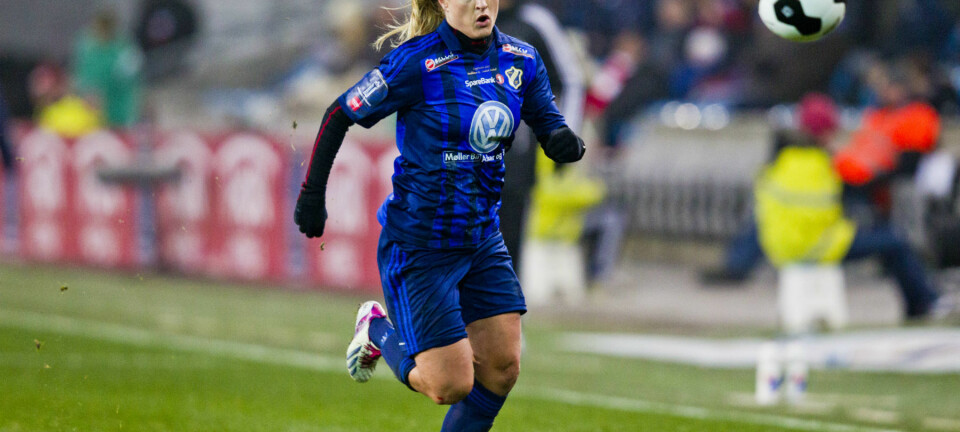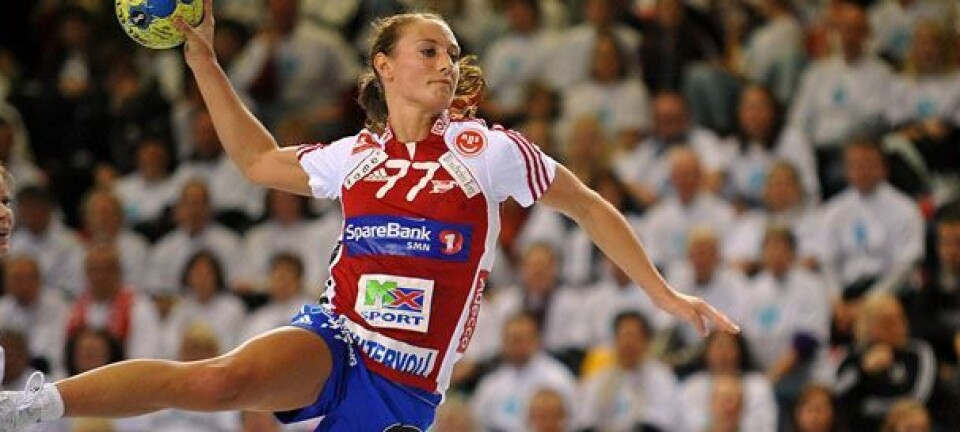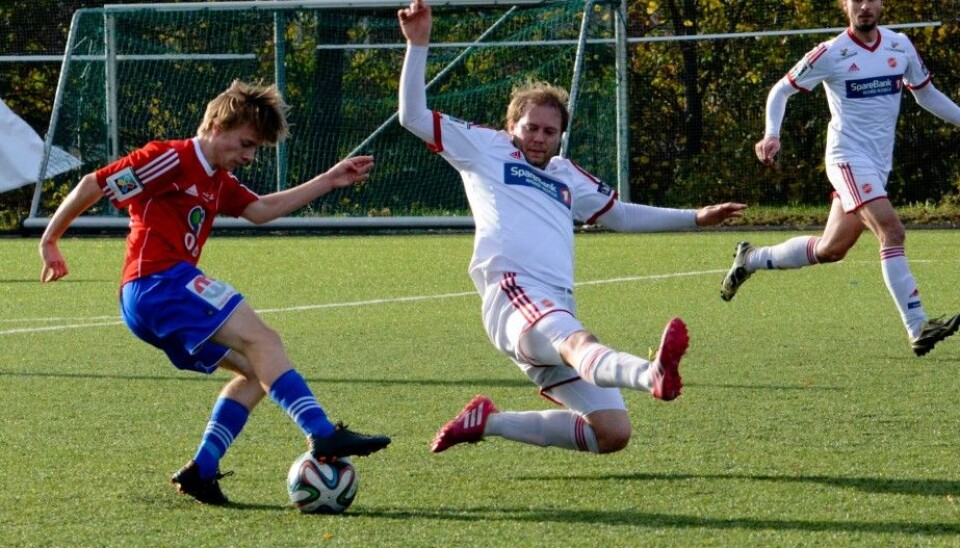
Intense intervals every fortnight are all that’s needed
A gruelling set of high-intensity interval training once every two weeks can suffice to keep footballers who are below the elite level in good shape during the winter lull.
Denne artikkelen er over ti år gammel og kan inneholde utdatert informasjon.
Football players in Norway’s second division don’t experience much glamour. Their daily lives in this league, two levels below the top, get little TV coverage and their goals are at best listed in tables buried at the back of newspaper sports pages.
So when a long season ends they ought to be entitled to a couple of months with their families, readying for Christmas holidays and relaxing before they start preparing for the next season in the new year.
But they can’t do that. Not if they want to keep abreast of their rivals and perhaps fight themselves up a division. Or at least avoid slipping down to a lower one.
Not much needed
Associate Professor Gunnar Slettaløkken at the Lillehammer University College’s Department of Sport Science has conducted research that might give them a little solace.

“One high-intensity interval training (HIT) every other week is sufficient to maintain maximum oxygen uptake during the winter break,” he says.
“These are players who have jobs, families and other duties besides football. It can be pretty challenging to stay in good condition during the winter lull. So it should be encouraging to hear that not all that much is needed,” he says.
Along with his colleague Bent Rønnestad, Slettaløkken has tested the effect of HIT during footballers’ winter off-season. Half of the participants were placed on a treadmill once a week and the other half once every fortnight.
They were made to press themselves through five four-minute bouts at close to their maximum heart rate. Each entire session, including warm-ups and breaks between bouts, took only about 45 minutes.
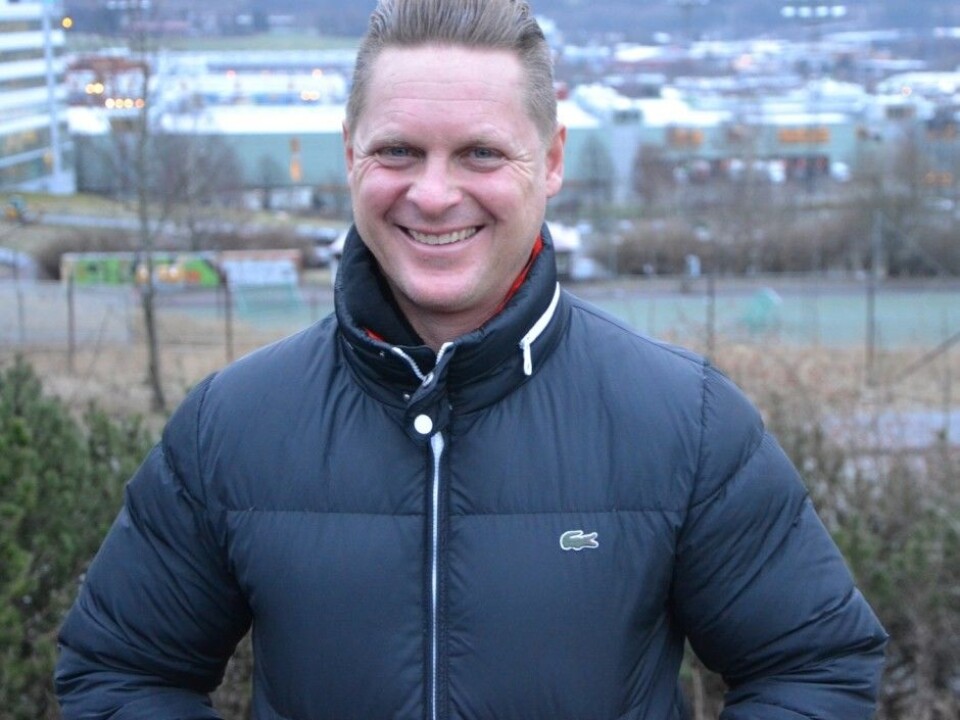
“We might have expected a difference between those who engaged in HIT weekly and those who only did it every other week. But the study shows that both groups managed to hold out equally well with maximal oxygen uptake,” says Slettaløkken.
Maximal oxygen uptake is a measure of how much oxygen the body can consume and use. It is a common measurement of endurance among athletes. Slettaløkken points out that endurance is essential for football players.
“It means they can run more and cover greater distances up and down the field, and that they need less time to regain their breath after a sprint,” said the researcher.
Of course they can spend the first days after a vacation like English pros used to do back in the day: Two weeks with just a little jogging. But if their form is okay after the break between seasons, they could also use their practice sessions to improve their game by playing more football, passing the ball, dribbling and perhaps repeating some clever free kicks. Not just running.
No control group
Slettaløkken emphasises that people should not jump to conclusions.
“The weakness of our study is that we did not have a control group that completely refrained from high-interval training,” he said. “But there are other studies that show a decline in maximal oxygen uptake among football players in a lower division during this period with less training.”
So he feels secure when he concludes that “even though this study says nothing about how oxygen uptake changes without any HIT, we can at least say that those who do train using intervals keep in condition.”
The test participants, all of them semi-pro footballers at the second and third level from the top, trained two to five hours a week in addition to the time they spent being tested.
Maybe not enough
Although the players retained their maximal oxygen uptake, the researchers found that this might not be enough. When they were tested in an exercise that bears more resemblance to playing on the field, sprinting 20 metres back and forth at an increasing pace, the results for both groups dropped during the winter break despite their weekly or fortnightly high-interval training.
“Perhaps they should be engaged in HIT even more frequently, or switch to a different type of endurance training,” says Slettaløkken.
Skeid coach Kjell Sverre Hansen Wold agrees with him.
“It’s important to have good oxygen uptake, but you have to be able to use it in your sport,” he says.
“All players need to train for endurance in a way that is specific to their sport to get the most benefit out of their oxygen uptake,” says Wold.
This is why HIT is just one of many types of exercise he makes his players do during what – at least in Skeid’s case – is rather misleadingly called a winter break.
Not a vacation
Skeid finished its season in the second division on 25 October. The subsequent weeks were no holiday.
“We had practice together four times a week throughout November. But the focus was on strength and stamina, intervals as well as long bouts. In December the players have had a break from joint training sessions,” says Wold.
This does not mean four weeks on a beach. Some of the older players might spend some extra time with their families but the hungry upstarts train just as much as ever.
“In December we stress physical training and strength training which is individually tailored to the players. They do this on their own. This is a period for them to develop themselves physically, gain endurance and strength, to become better prepared when we get together again in the new year,” says the Skeid coach.
Players who have suffered injuries during the season are given specially adapted exercises to rid them of their afflictions. Young players get a training programme tailored to their developing physiques and all are encouraged to play futsal, the rather playful indoor football game.
They all engage in HIT in various forms. According to the research by Slettaløkken, they should be ready for action, at least when it comes to being in shape, when the first joint practice session starts on 5 January.
----------
Read the Norwegian version of this article at forskning.no
Translated by: Glenn Ostling







